build it and they will come? Good intro here, but the Father then went on to extoll the stadium. But, some interesting points. You have to wonder if these massive structures are a perversion of some form of twisted ideology. Temples of the bourgeois, and a monument to the values therof. But, then religion is so heavily commodified- the religion of Jesus transformed into a religion about Jesus- with superstar preachers like Osteen fulfilling all the requirements of Debord’s Society of the Spectacle, that the lines are blurred between televised masses for millions and prime time football with its intimations of messianic violence.After all, there is something tacky and nihilistic to both, something beyond reality and into the realm of social appearance.
De Souza:We build the buildings, and then the buildings build us. That aphorism about the importance of architecture reminds us that we ought to pay attention to what we choose to build, and how we choose to build it, for it in turn will build us….

Robert ParkeHarrison. ---Kuspit:in contemporary society. Neo-Expresssionism shows the failure of heroism in modern life, to recall Baudelaire's phrase, or rather the meaninglessness of heroism in modern life -- certainly in view of the grotesquely distorted form it took in Hitler and the Nazis. (For the Neo-Expressionists fascism seems to be a perverse longing for a perverse version of the mythical hero. The Aryan hero is a perversion of the classical heroic ideal, just as Aryan architecture is a perversion of heroic classical architecture.) In short, the self portrayed in Neo-Expressionism is a self in the throes of an existential crisis of meaning. Read More:http://www.artnet.com/magazineus/features/kuspit/kuspit8-9-06.asp image:http://www.geh.org/parkeharrison/
…The re-opening on Friday night of the new BC Place stadium is therefore a key moment for Vancouver. We are what we build, and what we build today are shopping centres and sports facilities. Previous generations built the great churches, public libraries, university campuses and other great centres of culture – today’s culture of consumption and comfort is marked by great temples of entertainment and commerce….
It strongly suggests that in the modern world one must create one’s own meaning or have no meaning: the only source of meaning is the self that feels it has none — the paradoxical modern self. In modernity, which has demystified the world, there is no stable sense of human meaning. Is it possible to believe that human existence is unquestionably meaningful when it ends in death? Nonetheless, the self must heal itself of the will to meaninglessness that has become epidemic in modern society, if it wants to enjoy its life. The world’s demystifying knowledge can’t cure the disease of meaninglessness; only the self’s own mystifying — and necessarily narcissistic — art can do so. For the Neo-Expressionists, artistic expression of the self’s inexpressible suffering — fear of annihilation — is the only way to give it meaning and value.
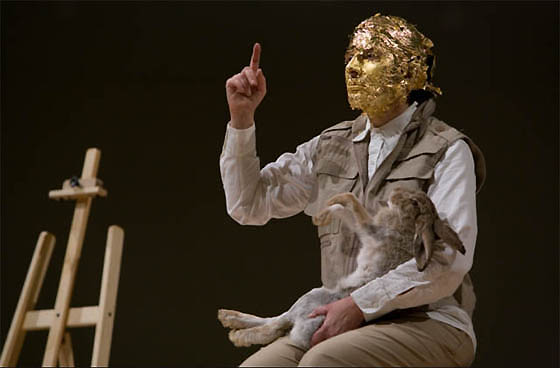
beuys. ---Art is meaningless to society -- except, perhaps, as an especially entertaining spectacle, that is, an unusually novel performance -- however instinctively meaningful. Indeed, it is more meaningful to a dead hare than to living people. Beuys could achieve greater intimacy with a dead hare -- an unconscious animal -- than with conscious people. Art was a shamanistic activity for Beuys -- a way of awakening people to such existential inevitabilities as death and suffering, especially the suffering of not being understood and respected.--- Read More:http://www.artnet.com/magazineus/features/kuspit/kuspit8-9-06.asp image:http://neonladosha.blogspot.com/2010/12/art-joseph-beuys-wie-man-dem-toten.html
The point that ( Viktor ) Frankl is making is deceptively simple and paradoxical: there is no guaranteed foundation of meaningfulness in modern society, which is why the self is forced to create the meaning of existence, including its own, or become sick unto death, that is, spiritually hollow to the extent of losing value to itself and others.( Donald Kuspit )
…The renovated BC Place features 54,500 new seats, wider than before (22 inches), cushioned and fitted with cup holders. There will be a 68-footwide video screen suspended over the field, second in size only to the 120foot Texas-sized behemoth installed at Cowboys Stadium in Dallas last year. It’s a fitting image of our cultural moment: bigger, more comfortable seats in which to eat and drink while watching TV….
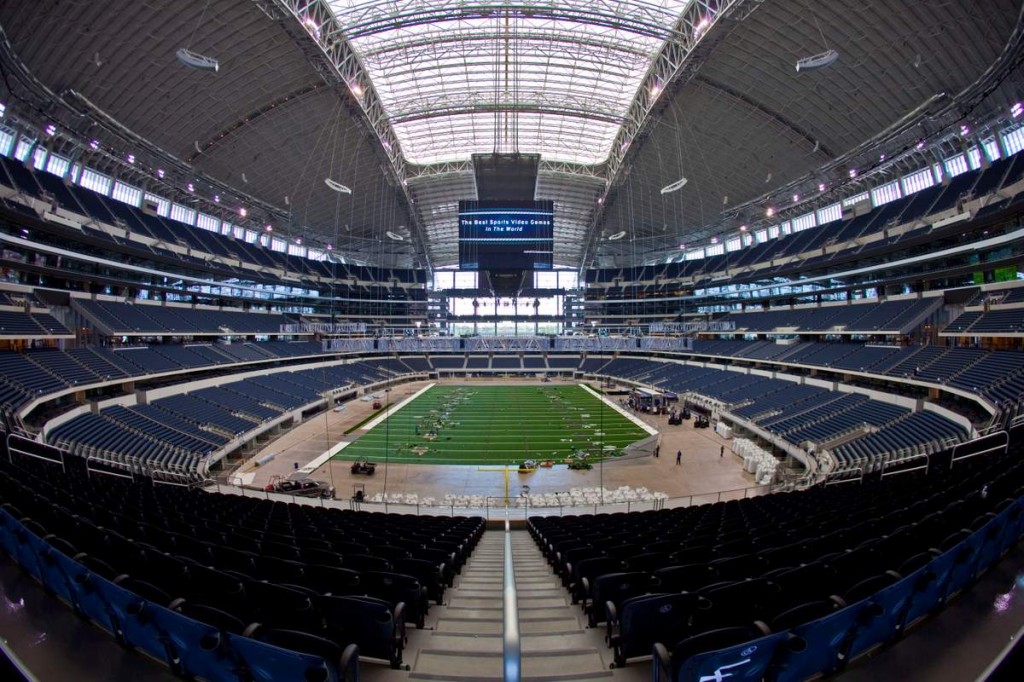
---Dallas Stadium---...In the society of the spectacle, publicity is the only ideology. "Publicity acquires the significance of an ideology, the ideology of trade," Henri Lefebvre writes, "and it replaces what was once philosophy, ethics, religion and esthetics. The time is past when advertising tried to condition the consumer by the repetition of slogans; today the subtle forms of publicity represent a whole attitude to life." He adds: "publicity is the poetry of Modernity, the reason and pretext for all successful displays. It takes possession of art, literature, all available signifiers and vacant signifieds." Publicity is a way of "engineering. . . consent," to use the felicitous phrase of the sociologist Wilson Bryan Key. Publicity "assaults human perception at both conscious and unconscious levels, especially the latter," making it difficult to "easily discriminate between fantasy and reality." It is a form of "psychological indoctrination," leading to "self-deception" and the forfeiting of individuality. "The essence of ideology is to create illusions, disguise the real, and substitute something unreal for it without this substitution being apparent," Mikel Dufrenne writes....Read More:http://www.artnet.com/magazineus/features/kuspit/art-and-capital
spectacle2-8-11.asp image:http://www.knowyourdallascowboys.com/2011/02/04/jerry-isnt-exhausting-all-of-his-seating-options/inside-cowboys-stadium-fisheye/
…It also a sign of the times that the $563-million cost is being represented as something of a bargain.Read More:http://www.nationalpost.com/news/monument+consumerist/5473877/story.html
ADDENDUM:
Homo Spectator is socially, culturally and economically dominant, as the Situationist Guy Debord argues. For him it is not clear that Homo Spectator is Homo Sapiens. In the society of the spectacle, we live in fantasy not in reality, and we are unable to distinguish them. As Debord writes, “the spectacle proclaims the predominance of appearances and asserts that all human life, which is to say all social life, is mere appearance. . . it [is] a visible negation of life. . . a negation of life that has invented a visual form for itself.” “It turns reality on its head,” even as “the spectacle is real.” It establishes “the empire of modern passivity”: the “image of the ruling economic order,” it is “beyond dispute” and “demands. . . passive acceptance.”…
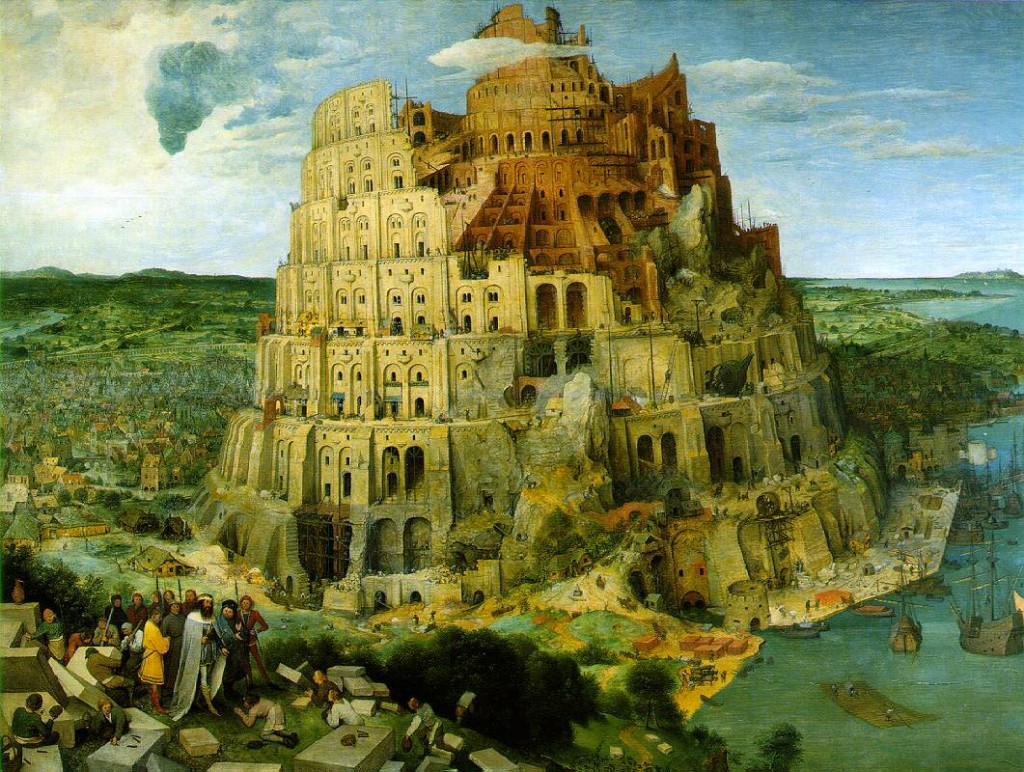
Bruegel. Babel. 1568.---I might emphasize that I mean derealization and depersonalization in their psychotic sense: the postmodern society of the spectacle -- in which art is part of the spectacle and makes a spectacle of itself -- is a psychotic society. Derealization involves "an experience or perception of the external world as unreal, strange, or alien, as it were, a stage on which people were acting." Dare one say performing in a spectacle? Depersonalization involves "a feeling of emotional detachment or estrangement from the perception of self, as if one were acting in a play or observing one’s physical and mental activity from without." It is the feeling one has watching oneself perform.---Read More:http://www.artnet.com/magazineus/features/kuspit/art-and-capitalist-spectacle2-8-11.asp image:http://www.artchive.com/artchive/B/bruegel/babel1.jpg.html
…Where in an earlier capitalist stage, there was a “downgrading of being into having,” the current capitalist stage “entails a generalized shift from having to appearing: all effective ‘having’ must now derive its immediate prestige and its ultimate raison d’être from appearances.” The society of the spectacle relies on “technical rationality” to produce pure appearances — especially mechanical and digital reproduction, the most rationalizing technologies for producing appearances, the more spectacular the better: “the spectacle is. . . a technological version of the exiling of human powers in a ‘world beyond’ — and the perfection of separation within human beings.” Art has credibility and exists only as a marketable, “technical” appearance in the society of the spectacle — as what Debord calls an “image-object” in the service of the “dictatorial freedom of the Market,” which is the ultimate spectacle and the ultimate reason for its existence and credibility. Those who can afford to own the most marketable “artistic” appearances, as well as the business artists who produce them, become part of the spectacle, that is, marketable appearances in their own right — those image-objects called celebrities. Read More:http://www.artnet.com/magazineus/features/kuspit/art-and-capitalist-spectacle2-8-11.asp
—————————————–
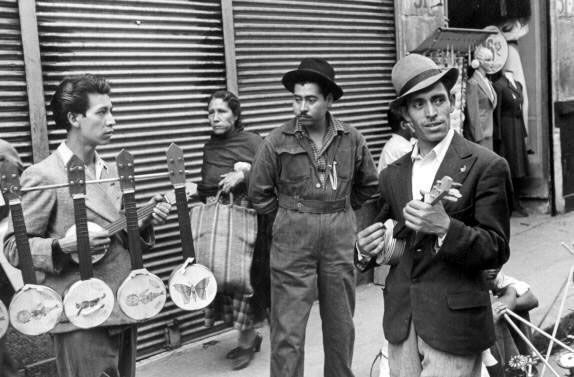
helen levitt. Read More:http://www.doobybrain.com/2009/03/30/helen-levitt-new-york-city-photograher-dies-at-95/
Christopher Caudwell ( 1935 ):Bourgeois ethics include the more difficult task of justification of the violence of bourgeois war. The Christian-bourgeois ethic has been equal even to this. Consonant to the bourgeois illusion, all interference with the liberty of another is wicked and immoral. If one is attacked in one’s liberty, one is therefore compelled to defend outraged morality and attack in turn. All bourgeois wars are therefore justified by both parties as wars of defence. Bourgeois liberty includes the right to exercise all bourgeois occupations – alienating, trading, and acquiring for profit – and since these involve establishing dominating relations over others, it is not surprising that the bourgeois often finds himself attacked in his liberty. It is impossible for the bourgeois to exercise his full liberty without infringing the liberty of another. It is impossible therefore to be thoroughly bourgeois and not give occasion for ‘just’ wars….
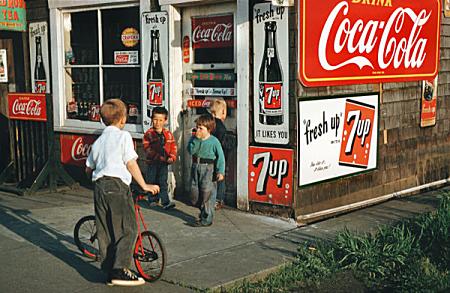
Fred Herzog photography. Vancouver. ---Souza:The new field is state-of-the-art artificial turf, and there are all manner of audio-visual spectaculars to amuse spectators, should the action on the field prove lacking. The most striking aspect of the new BC Place is the exterior look, as the roof is now supported by cables attached to 36 masts, each 50 metres tall, that surround the stadium perimeter. The enormous steel masts, 120 tonnes of steel each, required the concrete foundations of the stadium to be widened and strengthened. The engineering is impressive, but the aesthetics are more important. ( ibid. ) Image:http://web.ncf.ca/ek867/2011_02_01-15_archives.html
…Meanwhile bourgeois discomforts generate an opposition to bourgeois violence. At each stage of bourgeois development men could be found who were impregnated with the bourgeois illusion, that man is free and happy only when without social restraints, and who yet found in bourgeois economy multiplying coercions and restraints. We saw why these exist; the bourgeois economy requires coercion and restraint for its very life. The big bourgeois dominates the petit bourgeois, just as both dominate the proletariat. But these early bourgeois rebels could not see this. They demanded a return to the bourgeois dream – ‘equal rights for all’, ‘freedom from social restraints’, the ‘natural rights’ of men. They thought that this would free them from the big bourgeoisie, and give them equal competition once again. Read More:http://www.marxists.org/archive/caudwell/1935/pacifism-violence.htm







 COMMENTS
COMMENTS



